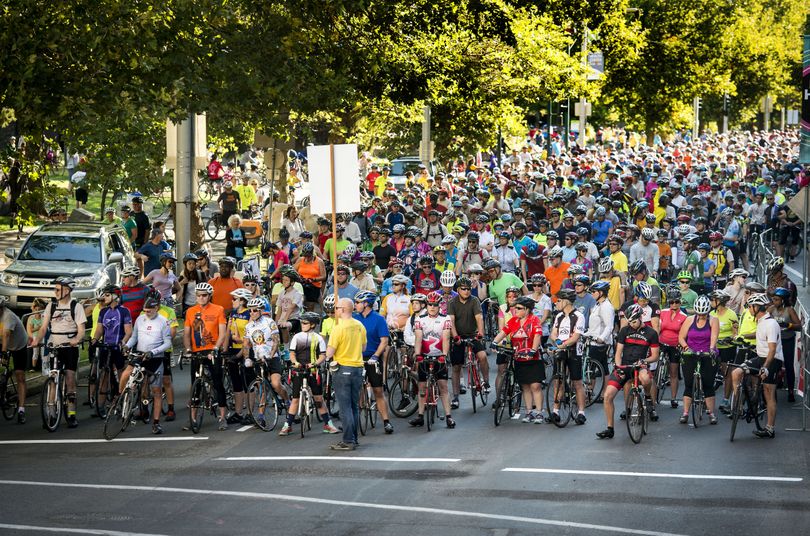Bicycles May Use Full Lane

Where are bikes allowed? How close can a car drive by a cyclist? Do bicycles even belong on roadways?
The answers to these questions are quite simple. Bikes are allowed everywhere. If a bike is taking a full lane, cars may not pass them in that lane.
But reading the comments on today's story about yesterday's group ride, SpokeFest, you might think that people actually get on the road - whether in car or on saddle - without ever studying the rules of the road. Who gives these people licenses anyway?!
A new study from PLOS ONE suggests that our shared roadways need only one sign to communicate these supposedly labyrinthine laws for all users: Bicycles May Use Full Lane.
Yes, when on the road, bikes are allowed to take up a full lane and cars cannot pass them. Bicyclists must follow all traffic laws. If you don't believe it, simply refer to Washington state law, in the Revised Code of Washington 46.61.755.
The study points out that riding a bike could help America's - and the world's - obesity problem, it's cheaper than owning and maintaining a car, it could help the poor and elderly get around and is a personal way to combat climate change. So why haven't more people switched to two wheels? It comes down to lack of facilities and safety.
Which is why the study's conclusion about that one simple sign - "Bicycles May Use Full Lane" - is so potentially meaningful.
Here's the PLOS ONE study's introduction:
Many of the greatest challenges facing humanity globally can be addressed, in part, by bicycling.
This statement may seem like exaggeration, but under scrutiny may be an understatement [1]. For instance, obesity is tied to car dependency in the United States and linked to the first lifespan decline in 200 years for people living there [2–3]. Cyclists are healthier and spend less time and money on medical care than other commuters [4]. Bicycling can promote mobility, particularly for the poor and elderly who often live in landscapes with amenities too dispersed for pedestrian access and cannot afford personal motor vehicle travel [5]. Replacing a car with a bicycle is, by a large margin, the single most important change a person can make to reduce their contributions to climate change [5–6]. Finally, because average Americans spend 15.6% of their income on motor vehicle driving, riding bicycles could have a large, positive effect on economic welfare and overall quality of life [5,7].
Why hasn’t this incredibly simple solution to so many problems been more broadly adopted, particularly in the United States? The reasons are complex and intertwined, including lack of access or desire to bicycle, roadways designed primarily for motor vehicle traffic, unpleasant weather, route, and light conditions, the need to carry bulky or heavy loads, and safety concerns [1,8–9]. In this article, we focus on safety concerns.
Of the three bicycle-related traffic control devices we tested, “Bicycles May Use Full Lane” signage delivered the message about the rights and responsibilities of bicyclists and motorists with respect to travel lane occupancy most consistently: bicyclists are permitted in the travel lane and need not move to allow motorists to pass them within the lane. Although Shared Lane Markings did increase comprehension in some cases, they did not deliver the message as consistently as “Bicycles May Use Full Lane” signage. We speculate that a combination of “Bicycles May Use Full Lane” signage and Shared Lane Markings might be particularly comprehensible. “Share the Road” signage failed to provide any additional comprehension in this regard when compared to the unsigned roadways in any of our tests. “Bicycles May Use Full Lane” showed particularly strong increases in comprehension for novice bicyclists and private motor vehicle commuters, critical target audiences for these traffic control devices and for efforts to promote bicycling in the US.
One last point. If you're confused by this when you see a cyclist on a sidewalk (which is illegal in downtown Spokane and I personally think is not appropriate just about anywhere for fast, confident riders), know that when a bike is on the sidewalk, the cyclist has the rights and responsibilities of a pedestrian.
A bike, in other words, is the missing link between walkers and drivers. Cyclists have the freedom to go just about anywhere.
